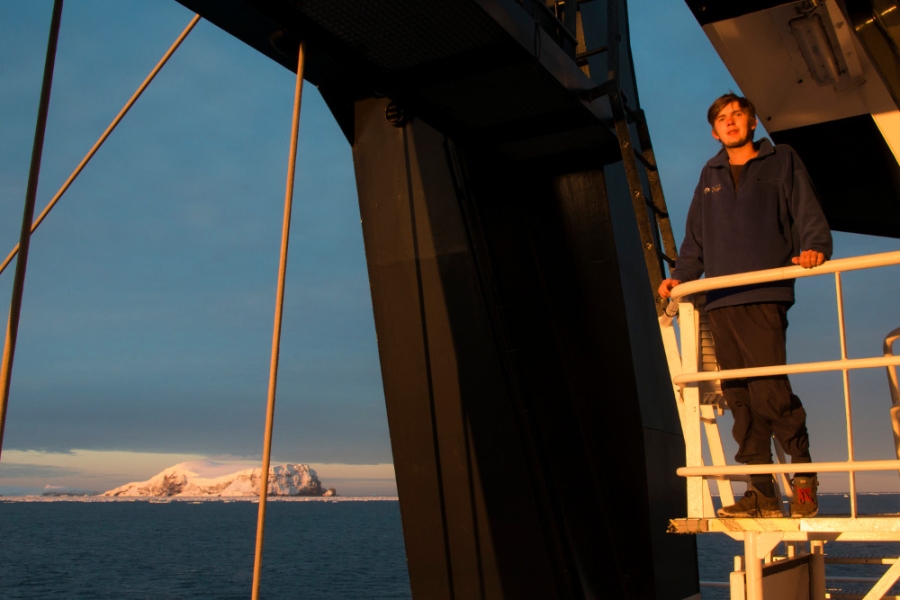It’s now day 8 at sea and day 3 at the Balleny Islands. The Balleny Islands are a group of volcanic Antarctic Islands situated at 67 degrees south. They are mostly barren rock, with steep cliff faces and covered by massive glaciers, but they are also home to some incredible marine wildlife!
The first time I got to see the islands I was completely blown away. I climbed up to the Monkey Island, which is the deck above the bridge. From there I had the perfect view to take in some of the most amazing scenery I have ever seen in my life. As far as the eye could see icebergs of all shapes, sizes and colours were floating on the glistening flat dark blue sea. Then, in the middle of all the ice, a massive island covered in snow, with glaciers running down all of its gullies, and icicles hanging off of its cliff faces.
As you cruise thought the ice, you start to notice little dark blobs sitting on the flat pieces of ice. As you get closer the blobs take the forms of Adélie penguins and crabeater seals, probably warming up in the sun before they embark on their next fishing trip in the -1 degree water! The waters around the islands are also very rich in krill, a baleen whales favourite food. We have seen humpback, minke, and fin whales gliding though the water.
The last three days we have had absolutely perfect conditions in a place known for its formidable weather year-round! So far we have had flat seas, sunshine and blue skies - a very rare combination here, and one of the most beautiful thing you will ever see. With the clear skies and sunshine comes the best sun sets. The sun sets very slowly around 10 pm and the sky turns all shades of red and orange, then once its full light hits the ice it is just magic as the ice turns pink and purple. The whole process takes about 2 hours to complete.
On board we have been watching the active acoustic monitor as we travel along the transects. When we hit a good patch of biomass we drop our net and trawl to find out what exactly we are looking at, how abundant it is, and then its size and weight. Once the nets are on the boat we have to sort the catch into different species, which can be incredibly hard to do as there are two very similar looking types of krill. We have also pulled up all kinds of crazy looking Antarctic fish so far including grenadiers with massive eyes and slender rat-like tails, jellyfish, squid, and a few other scary looking creatures.
In the passive acoustics lab, we sit and listen for whales. You can hear parts of the humpbacks’ song, and we can pick up the low frequency call of the male Antarctic blue whale hundreds of kilometres away and get a bearing on which direction it came from. It’s like someone shouting in Oamaru and being able to hear them in Dunedin! And the best part is, if you hear a new blue whale calling first, you get to name it! So far I have two, Jonty and Rex. Blake is still without a named whale. With this information we will be able to head the in right direction to track down the blue whales in the vast Ross Sea, once we finish up at the Ballenys in a few days and move on to the second stage of our trip.
Life on board the Tangaroa has been good, I’ve found my sea legs and can now manage to run on the treadmill and walk up and down the stairs like a normal person. With so much going on though, and working 3pm – 3am, it’s hard to find time to sleep because whenever you’re in bed you miss out on so much. One of my daily tasks is assisting Sarah a senior scientist from NIWA with one of her projects. Every night at midnight we take a water sample, fill 30 two-litre bottles, then spike 10 of them with nitrate, 10 with ammonium, and 10 with urea. We incubate these for 24 hours, take them out, and then filter out the phytoplankton. Sarah hopes to get a gauge on how these three different nutrients affect primary productivity in the Southern Ocean.
Zac

